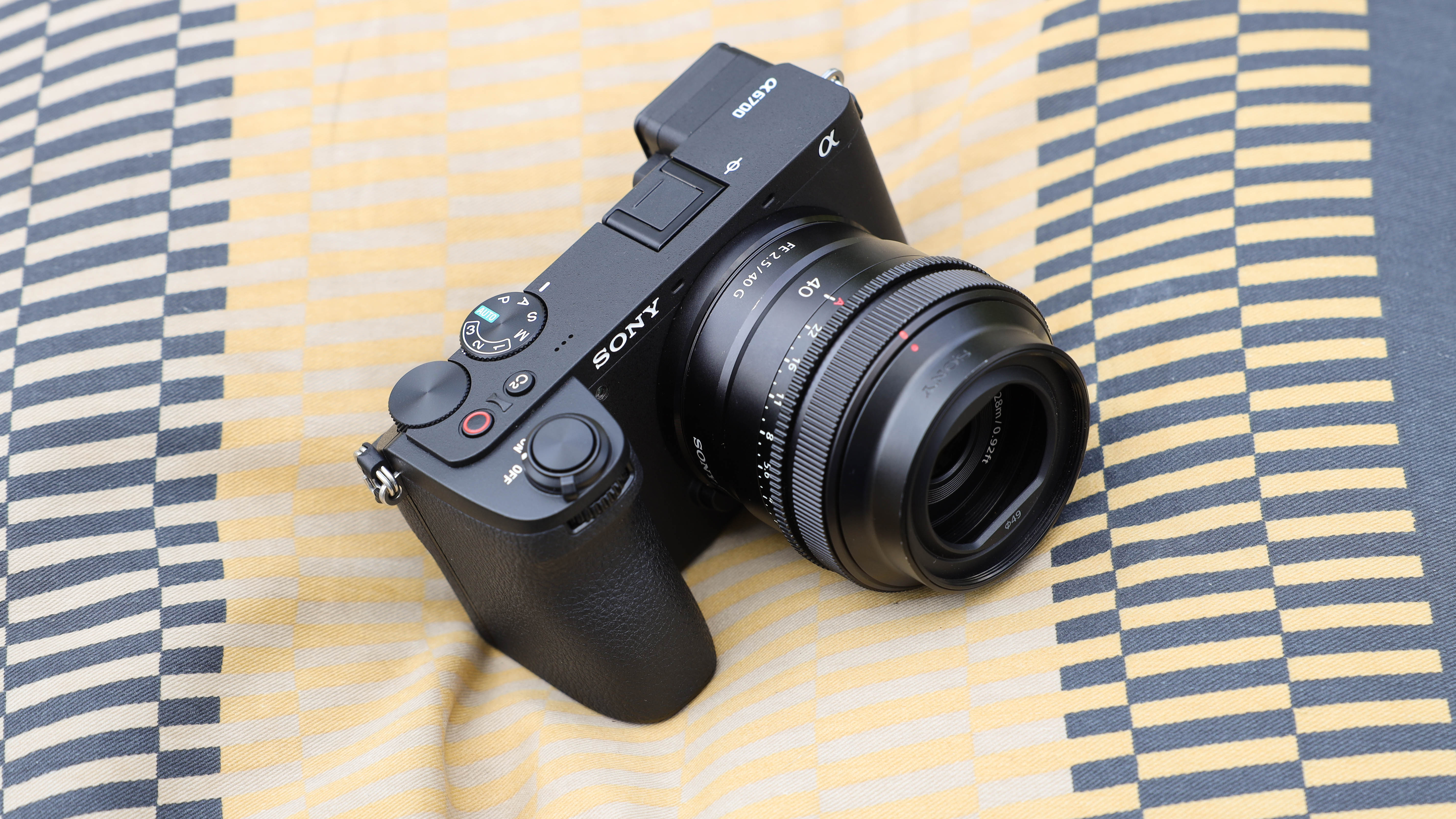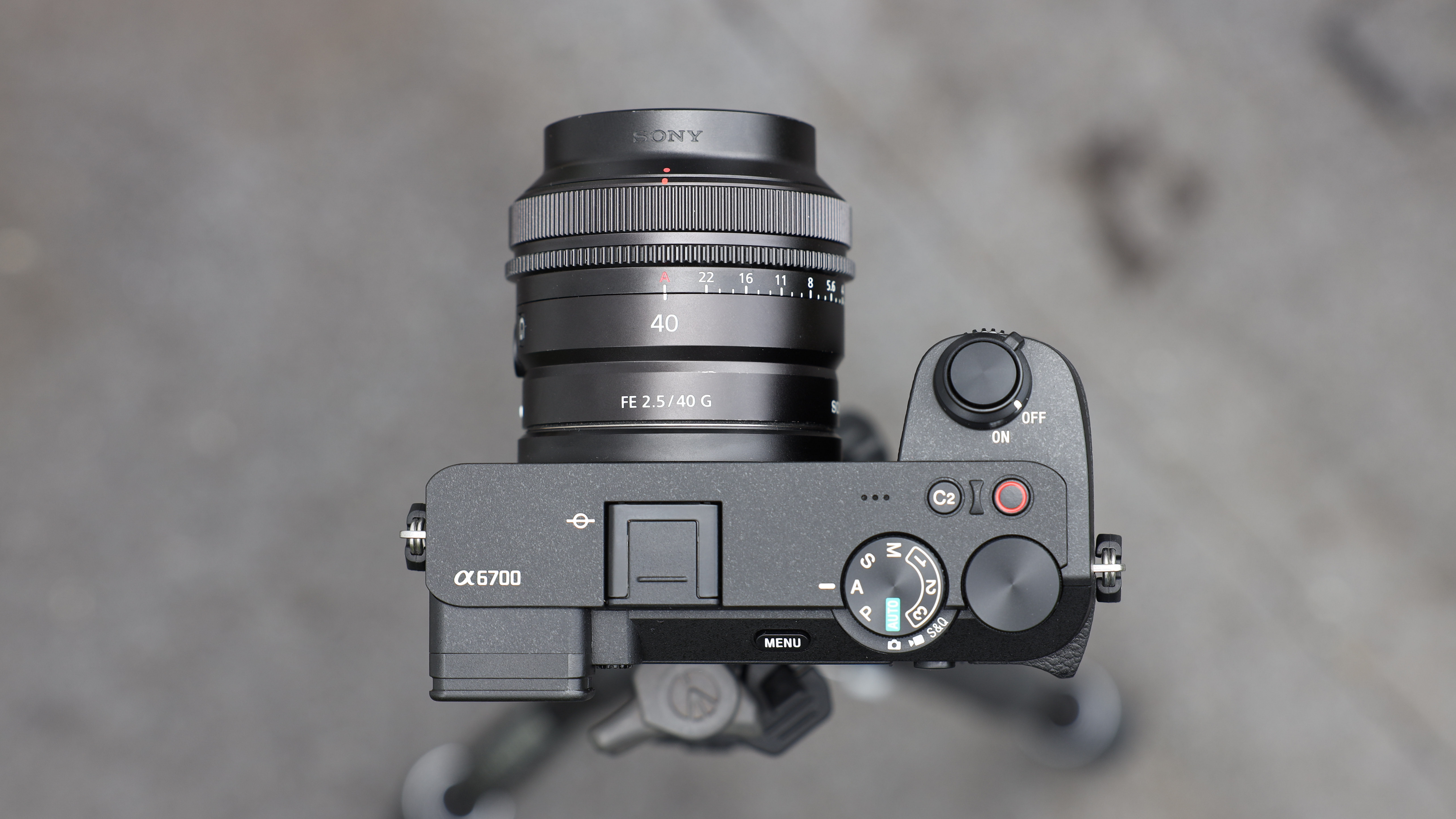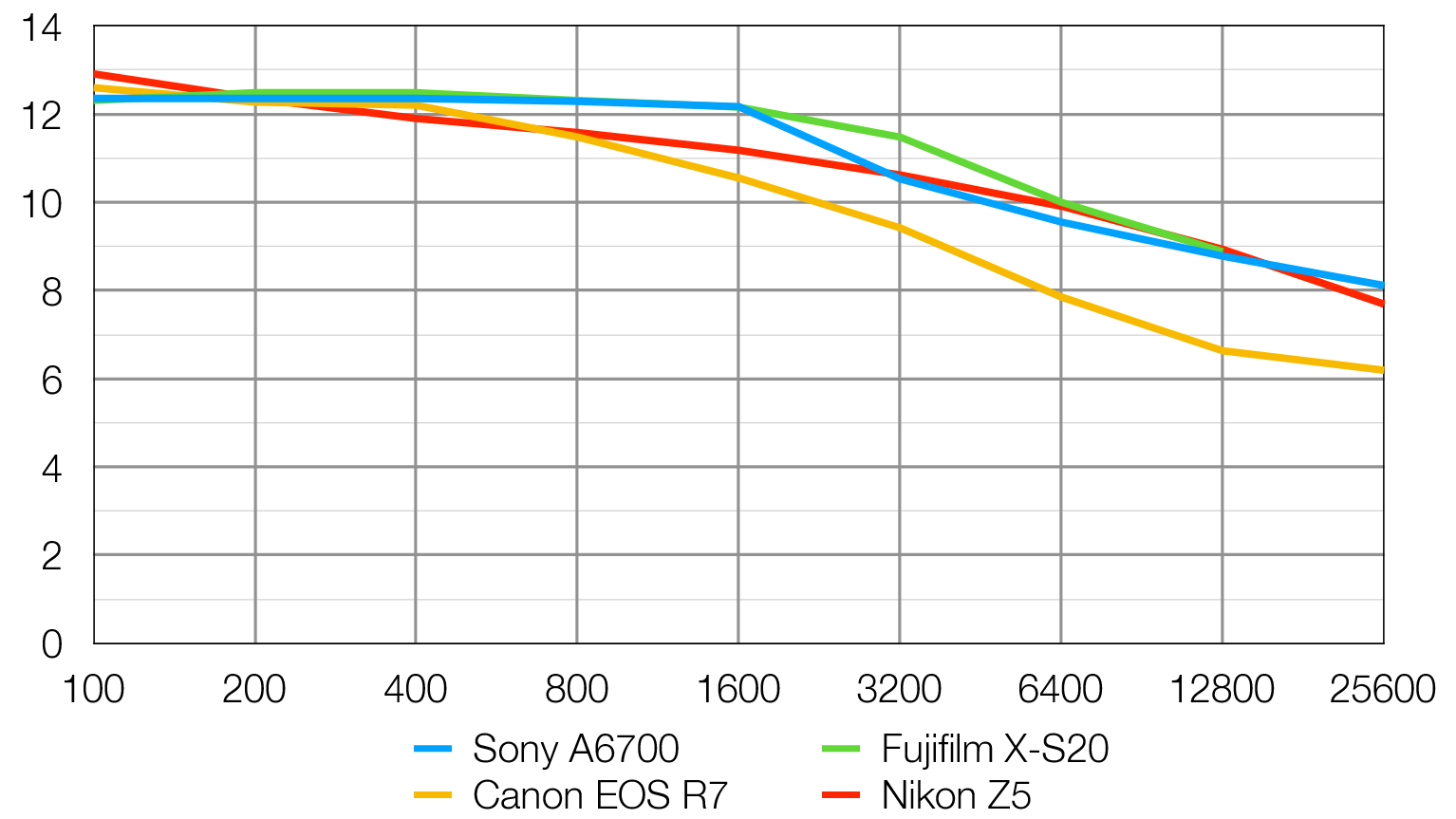
Sony hit on something great when it released its first APS-C crop sensor mirrorless camera way back in 2013, combining the new and exciting Sony E-Mount offering smaller and lighter mirrorless lenses, and a light and compact camera body that could easily slip into a bag. Sony’s a6x00 range of cameras became wildly successful with travelers, weekend photographers, and content creators as the compact hybrid camera to beat.
The top of Sony’s range since 2019 has been the Sony a6600, however, in the last few years Sony has made a lot of technical developments that they are rapidly rolling out to new camera models, this has meant that fans of Sony’s a6x00 range have been clamoring for Sony to update its lineup, and now Sony has answered those calls with the Sony a6700.
However, since the Sony a6600’s release, Sony just can’t seem to stop releasing similar cameras, and in the last few months, we have already had the Sony ZV-E1 and the Sony ZV-1 II. Sony’s ZV cameras are aimed at video-focused content creators, although are equally capable of taking quality stills. Except for lacking an electronic viewfinder, ZV cameras share much of the same design and technology as the a6x00 range. For example, the ZV-E10 is a compact interchangeable lens APS-C camera with a 24.1MP sensor and great 4K video for several hundred dollars less than an a6600.

With ZV cameras closing ground, does Sony’s a6x00 range still have a future? Well, certainly Sony still believes there is space in the market for both to thrive and find their audience. However, with the a6600 being a tough act to follow, and plenty of new competition out there, how does the new a6700 hold up?
Sony a6700: Specifications
Sensor: 26.1 megapixel BSI Exmor R
Processor: Bionz XR + AI Processor
ISO: 100-32,000 (80-102,400 extended)
Shooting Speed: 11 frames per second (buffer of 1000 JPEGS or 59 RAW)
Stabilization: 5-stop in-body
Video: 4K 120p/60p, HD 240p (S-Log3, LUT, S-Cine)
Power: Z Battery
EVF: 2359k XGA electronic viewfinder
Screen: 3" side-flip touchscreen
Storage: Single UHS-II SD card slot
Connectivity: Headphone/microphone jack, HDMI, USB-C, Bluetooth and WiFi.

Sony a6700: Key Features
The Sony a6700 features a 26-megapixel APS-C back-side illuminated (BSI) CMOS sensor from Sony’s Exmor R range, capable of ISO 100-32,000 (80-102,400 extended) and supported by 5-axis in-body image stabilization (IBIS) that offers up to 5 stops of shake correction.
Trickling down from Sony's high-end Sony A7R V, the a6700 also utilizes the combination of Sony’s latest Bionz XR processor and separate AI chip for autofocus and image processing, allowing for speeds of 11 frames per second with a buffer of 1000 JPEGS or 59 RAW photos at full resolution with continuous autofocus.

Autofocus now includes all of the latest subject recognition and tracking categories from the latest Sony cameras including human body, head, face, and eye tracking, as well as vehicles, animals, birds, and now – insects. Sony claims the autofocus performance is 20% more reliable than the previous generation. The a6700 now has almost twice the phase detection autofocus points, now clocking in at 759 points that cover 93 percent of the frame, and is able to focus in up to -3 EV.
Being very much a hybrid camera, the video specs are equally improved from the previous generation. The Sony a6700 offers Super 35 6K oversampled video and can record in 4K up to 120fps or 240fps in full HD which is 10x slowed footage. Video can be recorded internally with 14+ stops of range in 10-bit 4:2:2 in S-Log, S-Cinetone, and allows LUTs to be applied in-camera. However, the camera is not able to record in RAW or ProRes via HDMI output.
The electronic viewfinder (EVF) is still a 2.36m dot viewfinder with a 1.07x magnification and up to 120fps, although Sony claims it has made the viewfinder brighter and more pleasant to use than the last generation. The a6700 now also benefits from a side flip touchscreen rather than the flip-up screen that was on the previous generation, which will suit videographers much better.

Sony a6700: Build & Handling
The Sony a6700 keeps the compact build that is a hallmark of the series, not quite jacket-pocketable, but it is easy to drop into a handbag or large rucksack pocket. The a6700’s viewfinder is still in the left-hand corner in a rangefinder design, which isn’t to everyone's tastes, but it does mean the camera can be shorter and more boxy without the usual viewfinder hump up top, which also makes it easier to use it with cages and other accessories. The camera is actually a little deeper than I expected, giving it more of a chunky appearance. Overall I think the camera looks and feels good. I don’t think it is the most exciting or beautiful camera to look at, but it looks like it means business.
The grip on the a6700 is surprisingly deep and molded for what is quite a compact camera, and it is really comfortable to carry and use one-handed, and it solves one of my pet peeves of not being able to use the back buttons with my thumb one-handed without feeling like the camera is going to slip from my grip. Although I should caveat this with the fact that I used appropriate sized lenses for the camera, (the Sony FE 40mm f/2.5 G), and something larger like a Sony 24-70mm f/2.8 would make the camera much more front heavy and much much harder to go one-handed with.

The a6700 has microphone and headphone sockets, USB-C, mini HDMI, and an SD card slot that are all hidden behind three separate little flappy doors clustered on the left-hand side of the camera. These doors look much more aesthetically pleasing than rubber flaps, but I do find them a little more tricky and delicate to open, and worry about them getting knocked while shooting and snapping clean off.
It makes the organized person in me very happy that I can contain all my trailing wires to one side of the camera. Also, I am pleased to have the SD card slot not in the battery compartment though, which is always a frustration as someone who uses a lot of tripods and gimbals. I also think that a single SD UHS-II is really all this camera needs.
The buttons and layout will be familiar to Sony shooters, however, there are some key new additions. Firstly, Sony has added a secondary dial under the main mode selection dial for switching between photo, video, and S&Q modes. I really like this dial, it is much easier to use without looking than the switches found on Sony’s ZV lineup as I can just flick it with my thumb without having to adjust my grip.
There is now a larger dedicated video record button on the top of the camera rather than the side to switch to video at any time, which is much easier and more natural to use. The AF-MF/AEL switch from the a6600 has also been replaced with an AF-ON button, which depending on how you shoot will be a big deal or just pass you by unnoticed (I'm in the latter camp).
Possibly my favorite improvement on the a6700 from the previous generation is the screen. The a6700 now has a fully articulated vari-angle screen instead of the a6600’s awkward flip-up one. This is just such an easier screen to use for shooting awkward angles or recording selfies or vlogs. I know some street photographers like a flip-up screen so they can shoot from the hip, but the vari-angle screen is just more versatile for more types of photography and videography.

Now for the only big negative I have with the Sony a6700 build, and that is its viewfinder. For a new camera with a not-insubstantial price tag, the viewfinder just feels dated. The viewfinder’s resolution is poor by modern standards, it is quite dark (even after playing with the settings) and there is some considerable flickering in highlights. Don't get me wrong, it is plenty usable, but it's just not a good experience and I found myself defaulting to using the screen a lot to shoot, which as someone who loves a viewfinder, I would never normally do.
The viewfinder has always felt like a bit of an afterthought on the a6000 range of cameras, especially as the range starts to feel more indistinguishable from Sony’s ZV lineup, and without a good viewfinder, its harder to pinpoint the reason from the a6700 to exist outside of the ZV range.

Sony a6700: Photo Performance
The a6700 might "only" have a 26-megapixel sensor, which looks a little tame when compared to the 40MP sensor in the Fujifilm X-T5 or the 64MP sensor in Sony’s own A7R V, this is more than enough resolution to use across the web, social media or medium-sized prints, and still competes with rival cameras at this price point.
Details from the a6700 are excellent, Sony’s cameras exhibit some of the most clinically sharp images available, and the a6700 is no exception. I personally prefer a little more softness to my images than Sony’s default profile, but that is down to personal preference and the work you create.
Colors are accurate, but have richness and vibrancy that makes them pop without looking unnatural. The a6700 managed to produce an accurate, and importantly, consistent white balance between photos, even in changeable weather and lighting. I also really like the skin tones that Sony cameras reproduce, veering towards slightly warmer tones and increased saturation that makes subjects look more healthy and vibrant, Sony has done some good work to improve these in recent iterations of its sensors.

As the a6700 now uses the already acclaimed Bionz XR and AI Chip, you can expect the autofocus to be incredibly fast and accurate. For static subjects, the a6700 locked onto subjects at blink and you'll miss it speed, at this point it is hard to see how standard point autofocus can get perceptively faster. Where the a6700 now shines is in its AI recognition and tracking capabilities for humans as well as various animals, birds, vehicles, and now – insects. Unfortunately, I couldn’t find an abundance of insects, I can confirm that the animal and bird tracking works to perfection on the limited domestic animals I could find in London, and the camera even tracked some foxes sulking around my garden in near darkness.

Sony’s human and face tracking is some of the best available, the a6700 can recognize human bodies and heads, as well as faces and eyes. The camera had no issues tracking my subject around the frame, keeping his eye in focus in every shot. Even deliberate erratic movements couldn’t throw the focus off. I also got an impressive hit rate for burst shooting for full subjects, although it couldn’t nail focus on small details like eyes in every shot, it still impressed me with how many usable shots there were.
Sony a6700: Sample Images










Sony a6700: Video Performance
It should come as no surprise by now, with Sony’s big focus on video, that the video performance on the a6700 is excellent. The 4K video is impressively sharp, rich, and detailed in standard outputs, if you have no intention of ever digging into codecs or LUTs then you really don’t need to as the standard footage from the a6700 is definitely good enough until you want to get really creative. The a6700 does have several pre-built-in looks and styles to choose from, these are nice, although can quickly veer into cheesy. But if you don’t want to spend an age in editing software, these are great to slap on your footage.
Sony’s image stabilization continues to be some of the best around, with solid stabilization in gentle or steady movements like panning or zooms, although the IBIS struggled a lot more with heavier movements. Walking is definitely softened by the IBIS, but don’t expect iPhone-like smoothness straight out of the camera.
Autofocus on the Sony a6700 for video is just so good. Sony has been leading the pack for some time and while other brands have nearly caught up, Sony just seems to still be a whisker ahead. I have found Sony’s tracking to be the most reliable out of the brands I have tested when it comes to human subjects. Tracking subjects turning away for moving in and out of frame is just really solid, and the camera barely insists on finding subjects in random inanimate objects, which is a common complaint I have with other systems.
Sony a6700: Lab results
For our lab data comparison, we compared the A6700 to key APS-C hybrid camera rivals like the Fujifilm X-S20 and Canon EOS R7. Nikon's best APS-C offering is the aging Z50, but this really isn't a match for the specs of the A6700. We instead opted to include the Nikon Z5, as despite being full-frame, it costs about the same as the A6700, making it an intriguing alternative.
We test resolution using Imatest charts and software, and dynamic range and signal to noise ratio with DxO Analyzer.
Resolution:

The 26MP A6700 does well to resolve a comparable level of fine detail to the 32.5MP EOS R7 throughout the tested sensitivity range.
Dynamic range:

There's little to separate the A6700 from the X-S20 and Nikon Z5 when it comes to dynamic range.
Signal to noise ratio:

This test compares the amount of random noise generated by the camera at different ISO settings as a proportion of the actual image information (the 'signal'). Higher values are better and we expect to see the signal to ratio fall as the ISO is increased.
This is our only lab test in which the A6700 doesn't score particularly well, producing images that are noticeably noisier than the X-S20's. It's not that surprising that the Nikon Z 5 outperforms the A6700 in this test. Its full-frame sensor allows for relatively large individual photosites ('pixels'), which in turn can be more light-sensitive and therefore less likely to generate noise.
Sony a6700: Verdict
The Sony a6700 is a logical step forward from the a6600 that came before it, it doesn’t reinvent the wheel, still offering a compact rangefinder-style APS-C camera, but some design refinements and hops forward in technology make this a compelling upgrade. Although the starting price has increased since the previous generation, and marks this camera as precariously more expensive than some rivals.
However, the biggest selling points for buying the a6700 are for hybrid shooters who want a compact camera but still want a viewfinder, as the a6700 has become the new Sony APS-C camera to buy for the best stills experience. While the leaps forward in 4K video recording combined with the latest in AI autofocus from Sony’s ZV and FX lineup making its way into the a6700 make this a compelling alternative to Sony’s ZV lineup. Overall, the a6700 is one of the best options for hybrid travel photographers or content creators that crave professional features in a small package.

You might also like...
The hottest competition for the new Sony a6700 comes from Fujifilm, who have gone all in on the APS-C format. The Fujifilm X-S20 is one of the best all-around hybrid cameras you can buy right now, with a similar sensor for stills, but goes even further for video with 6.2K open-gate footage. The X-S20 has a more traditional SLR design, plus it is cheaper than the a6700.
If you are happy with a less compact and traditional-styled camera, then the Canon EOS R7 packs a punch. The EOS R7 is more focused on stills, with blistering shutter speed and autofocus, but it is no slouch when it comes to video, offering 4K footage with the latest subject recognition and tracking.
Read more: Find out more about the best APS-C compact cameras, or the best camera for video in our guides.







